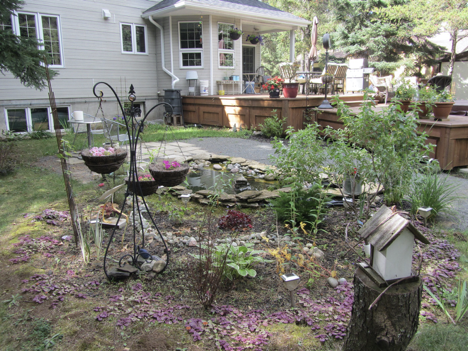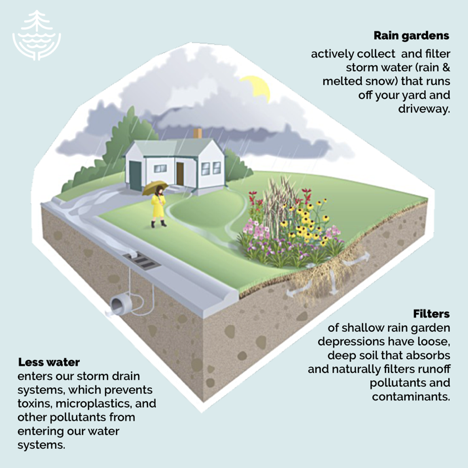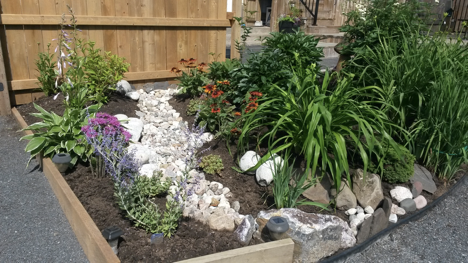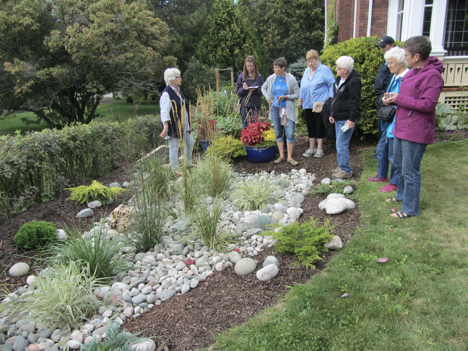Rain Gardens

What is a Rain Garden?
Rain gardens are landscaped features that temporarily capture and filter stormwater (rain & melted snow) that runs off of building rooftops, driveways, patios, or other hard surfaces like a parking lot.
A rain garden consists of a shallow, bowl-shaped depression formed along the natural slope of a landscape, generally composed of loose and deep soil, native perennial shrubs, grasses, and flowers. These features mimic natural systems, helping to soak up and clean contaminated runoff before it enters the nearest waterway. Rain gardens come in many shapes and sizes, and can be made to complement your residential landscape.
Why build a rain garden?
Rain gardens not only beautify your property, but they also have the added function of improving residential drainage and protecting urban waterways. Rain gardens can help:
- Filter and prevent pollutants from entering municipal storm drains, which empty into local streams and rivers that drain to Lake Superior
- Reduce the potential for localized flooding and drainage issues
- Create habitat for birds, butterflies and beneficial insects
- Control up to 100% of runoff* from an average rainfall (based upon design)

What is stormwater runoff?
Simply put, stormwater runoff is the water that runs off the land, or another hard surface, during a heavy rainfall or snowmelt event rather than soaking into the ground where it falls.
Why Is This a Problem?
After heavy rainfall or snowmelt in an urban setting, stormwater flows along hard surfaces like sidewalks, driveways and streets, looking for somewhere to settle. Common pollutants, including lawn fertilizers, engine oil, pet waste, cigarette butts, plastics, and other litter, are picked up and mixed into the runoff along the way. This contaminated stormwater eventually flows into a nearby storm drain.
Stormwater is generally not cleaned or treated before it enters a storm drain. These drains discharge into the nearest waterway, like McVicar Creek, the McIntyre River, Neebing River, or Current River, to name just a few in the Thunder Bay area. Because these rivers and streams empty into Lake Superior, any contaminated stormwater runoff has a direct impact on the natural environment, wildlife habitat, and our drinking water.
By installing a rain garden on your property, you can help capture runoff from your home rooftop, which reduces the volume of runoff flowing into municipal storm drains.

Summarized Benefits:
- Helps to control runoff during heavy rainfalls
- Improves drainage at the lot level
- Helps to reduce erosion in local rivers and streams
- Provides habitat for beneficial insects, birds, and wildlife
- Reduces mowing and associated maintenance
- Recharges groundwater
- Improves local water quality
- Beautifies your residential property
Plant Your Own Rain Garden!
Download EcoSuperior's Rain Garden Manual, here.

Is a Rain Garden Right for You?
- Rain gardens are ideally gravity-fed by a downspout connected to a rooftop or other hard surface.
- They drain completely in about 24 hours or less and,
- Are located at least 3 metres from a building foundation or nearby home.
Learn more:
